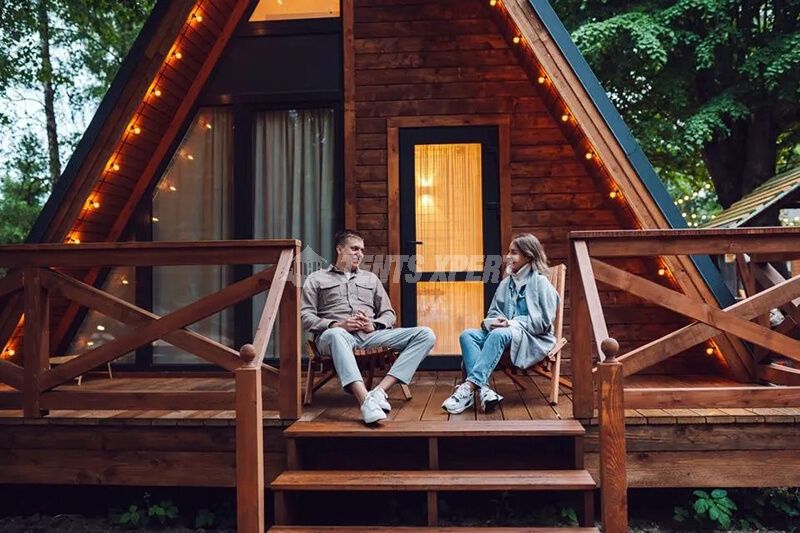Mar. 24, 2025
Luxury travel is evolving, and at its forefront is a rapidly growing sector: glamping. The fusion of nature and high-end hospitality has propelled glamping from a niche offering to a mainstream industry poised for significant expansion. According to Arizton's research, the U.S. glamping market is projected to skyrocket from $561 million in 2023 to $1.3 billion by 2029, underscoring the increasing demand for high-end outdoor experiences.
This shift has not gone unnoticed. Marriott’s recent acquisition of Postcard Cabins signals a strong vote of confidence in the outdoor hospitality sector.
With my experience as an entrepreneur in the hospitality industry and background in sustainable infrastructure, decarbonization strategies, and ESG investment, I have witnessed firsthand how businesses that embrace eco-conscious hospitality models gain a competitive advantage. As consumer demand shifts toward authentic, sustainable travel experiences, glamping presents a high-growth opportunity for investors and hospitality leaders looking to align with the future of luxury travel.

Modern travelers are redefining luxury—it’s no longer just about five-star hotels, but meaningful, immersive experiences that foster a connection with nature.
This trend is reflected in the numbers. Booking.com’s Sustainable Travel Report 2024 found that 83%of travelers care about traveling sustainably. This is pushing hospitality brands to adopt more eco-friendly innovations. Off-grid accommodations, solar-powered retreats and green construction materials are becoming the new standard.
Wellness is another key driver. The post-pandemic era has intensified the demand for retreats focused on relaxation, mindfulness, and well-being. Many glamping destinations now feature forest bathing experiences, on-site yoga, and farm-to-table dining, catering to travelers seeking both escape and rejuvenation.
The glamping sector is no longer a side venture; it’s a major player in the hospitality industry. Investors are directing significant capital into luxury outdoor accommodations as demand continues to grow. With the rise of experiential travel and the shift toward sustainable tourism, high-end outdoor hospitality is becoming an attractive investment.
Strategic site development has become a key focus. Locations within a two- or three-hour drive from major cities are often prime real estate for glamping resorts, catering to urban dwellers seeking quick escapes. One study found that "hotel property’s surrounding environment, including attraction-driven tourism industry specialization, could affect guests’ locational satisfaction.
Technology is also reshaping the industry. AI-driven personalization is enhancing guest experiences, from curated itineraries to digital concierge services. Meanwhile, smart energy systems are improving sustainability and cost efficiency. A report from CBRE notes that AI-driven energy management systems are helping hotels and resorts optimize heating, cooling, and lighting based on occupancy rates and weather patterns, reducing waste and increasing operational efficiency.
Despite its rapid ascent, the glamping industry faces challenges that must be addressed for long-term success. One of the biggest hurdles is balancing luxury with environmental responsibility. Many high-end travelers expect premium amenities, but those offerings must align with sustainable practices.
According to a report by Euromonitor International, the demand for sustainable travel is increasing. I've noticed many consumers actively seeking eco-conscious accommodations that do not compromise on comfort. Finding innovative ways to integrate sustainability into high-end hospitality will be key to meeting guest expectations.
Regulatory and zoning hurdles present another challenge. Many outdoor hospitality businesses must navigate complex local laws to obtain permits. Understanding local zoning ordinances and working closely with regulators from the outset is critical to streamlining the approval process and avoiding costly delays.
Seasonality can also impact profitability, but I've noticed some businesses are implementing strategies to mitigate this challenge. Dynamic pricing models, which adjust rates based on demand fluctuations and market conditions, help maximize occupancy throughout the year. Additionally, expanding offerings to include year-round activities—such as winterized accommodations, wellness retreats, and exclusive seasonal experiences—can help maintain steady revenue streams and increase guest retention.
Looking ahead, the industry is poised for further innovation. Luxury cabins and modular eco-designs are becoming increasingly popular, offering durability and flexibility for year-round operations. AI-driven sustainability tools are optimizing resource management, minimizing waste and enhancing guest personalization.
I've noticed more brands are also incorporating community-integrated experiences, blending local culture with high-end hospitality. Guests today seek authentic interactions, and some businesses are responding by partnering with local farmers for farm-to-table dining and offering nature tours led by local Indigenous people—experiences that enhance guest satisfaction and foster deeper engagement. Supporting this shift, a report by Booking.com reveals that 75% of global travelers seek authentic experiences rooted in the local culture, underscoring how essential these partnerships are in delivering value and deepening guest engagement.
Glamping is not just a passing trend—it is a fundamental shift in how people experience luxury travel. With a projected 10.3% compound annual growth rate over the next five years, businesses that prioritize sustainability, technology, and guest experience could lead the transformation of the hospitality industry.
For investors and business leaders, the opportunity is clear:
● Demand is surging.
● Profit margins remain strong.
● Early entrants could secure market leadership.
As major hospitality brands double down on outdoor accommodations, glamping could redefine luxury travel. The question is no longer if this sector will grow—but who will capitalize on its potential.
Author Bio

By Romain Pison, COUNCIL POST | Membership (fee-based). Romain Pison, CEO of NoviCarbon - an entrepreneur and decarbonization expert known for his work in ESG and green infrastructure. Read Romain Pison's full executive profile here.

Chat Now